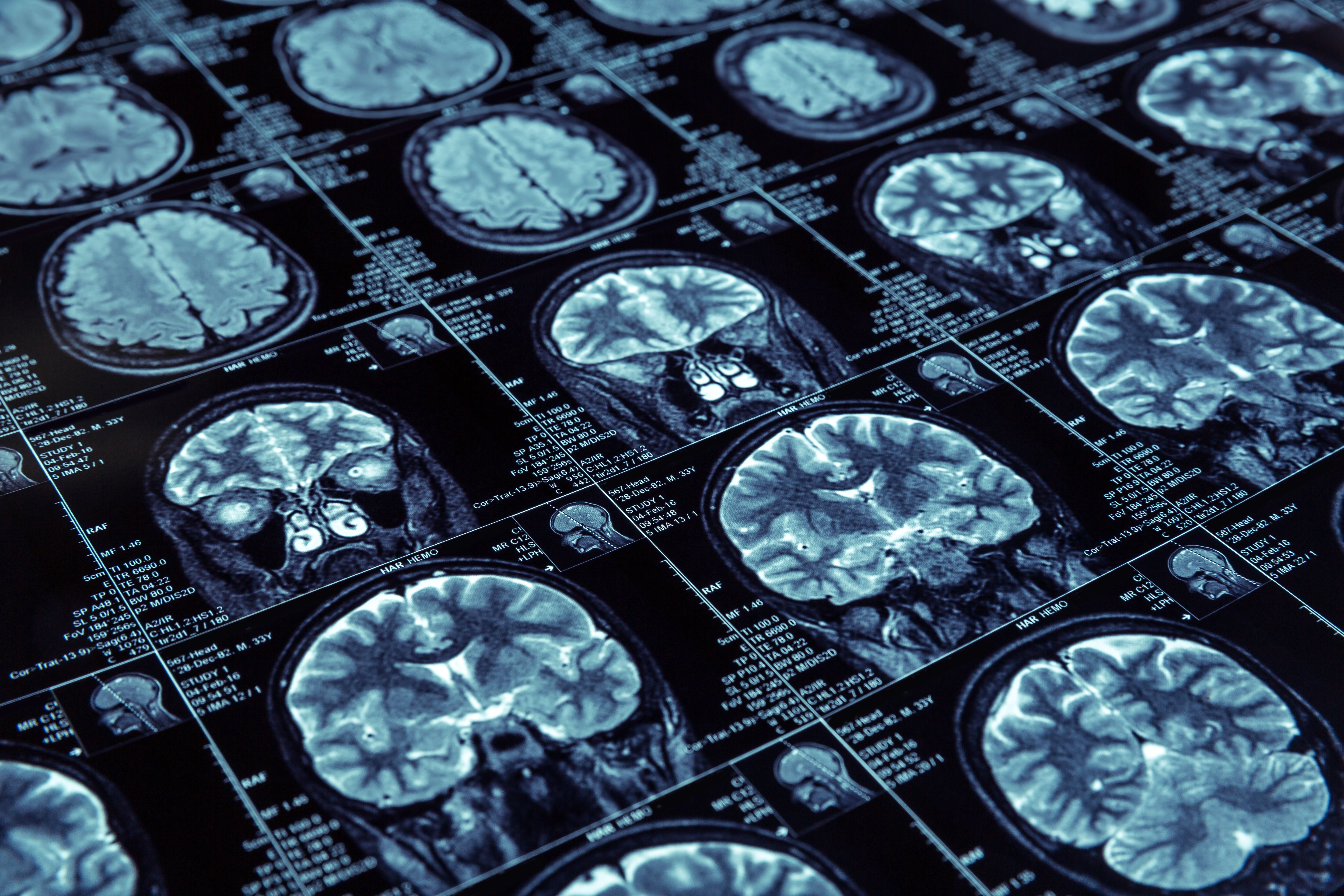News
Article
Emerging Trends in Alzheimer Disease Detection and Treatment
Author(s):
Alzheimer disease research is yielding breakthroughs with blood tests and brain scans that can enhance early diagnosis, while new drugs promise to slow the disease and improve patients’ lives.
Alzheimer disease research is yielding breakthroughs with blood tests and brain scans that can enhance early diagnosis, while new drugs promise to slow the disease and improve patients’ lives. | Image Credit: Nomad_Soul - stock.adobe.com

Alzheimer disease is complex, and research is continuously ongoing to monitor brain changes in patients with the progressive disorder.1 Changes in the brain could begin decades prior to appearance of recognizable symptoms. In early-stage Alzheimer disease, toxic proteins build up in the brain, forming plaques and tangles. These damage neurons, disrupting their function and connections, leading to cell death. The hippocampus and entorhinal cortex, key memory centers, are particularly vulnerable.
Current Alzheimer Diagnosis Methods
An Alzheimer diagnosis can be identified in various ways, including an evaluation of symptoms, several tests, and discussions with family or friends to learn more about the behavior of the patient.2 Health care professionals tend to examine cognitive skills, changes in personality or behavior, thinking impairments or changes, cause of symptoms, and impact on the ability to function in daily life. Memory loss can also be tested through mental exams, neuropsychological tests, laboratory tests, and brain imaging tests.
The Alzheimer’s Association published revised criteria in June 2024 for the diagnosis and staging of Alzheimer disease that reflect the biology of the disease and the recent advancements in research, diagnostics, and treatment.3 The association updated the biomarker classification system to rely on blood-based biomarkers identified in laboratory tests or on brain scans rather than including written memory tests.4 The goal is to detect symptoms early, or even before they appear, as this is the most promising stage for treatment.
New criteria suggest patients could be diagnosed with Alzheimer disease based on a blood test despite no signs of memory difficulty. However, some experts have argued patients could have amyloid-beta proteins in their brains and blood without developing dementia later in life. Medications to treat Alzheimer disease show improvement in patients with early memory loss, but there could be risks that include fluid accumulation, swelling, and microbleeds in the brain.
The updated Alzheimer diagnosis criteria reflect recent research advancements and approved treatments targeting the disease's core pathology, underscoring the need for collaboration among clinicians, industry, and academia.
Recent research on blood-based markers has shown promising diagnostic accuracy, making early detection of Alzheimer disease more accessible and potentially revolutionizing clinical care and research.
Current Alzheimer Disease Treatment Methods
Alzheimer disease remains incurable, but personalized treatments can offer temporary symptom relief.5 The most popular medications include acetylcholinesterase (AChE) inhibitors because they help nerve cells communicate with one another in the brain.
The 3 AChE inhibitors that received approval for Alzheimer disease are donepezil, rivastigmine, and galantamine. While all 3 drugs work similarly, one drug may be favored over another based on their adverse events (AEs).
When Alzheimer disease progresses, nerve cells are further damaged and produce too much glutamate.6 Memantine is a medication recommended for patients with severe, late-stage Alzheimer disease to block the effects of too much glutamate.
Common AEs of donepezil, rivastigmine, and galantamine include loss of appetite, nausea, vomiting, and diarrhea. Less common AEs include muscle cramps, headaches, dizziness, fatigue, and insomnia. The AEs from memantine are not as common and often less severe but can result in dizziness, headaches, tiredness, raised blood pressure, and constipation.
Alzheimer Disease Treatment Updates
The FDA approved lecanemab (Leqembi) as an Alzheimer disease treatment that expressed a downtrend in progression as it reduced amyloid plaques in the brain.7 The approval of lecanemab was the first amyloid-beta–directed antibody to be converted from an accelerated approval in January 2023 to a traditional approval in July 2023 for the treatment of Alzheimer disease. The traditional approval was based on results of CLARITY AD, a phase 3 randomized, controlled clinical trial.
“This confirmatory study verified that it is a safe and effective treatment for patients with Alzheimer’s disease,” commented Teresa Buracchio, MD, director of the office of neuroscience in the FDA’s Center for Drug Evaluation and Research.
Lecanemab is dosed as either a 500 mg/5 mL injection or a 200 mg/2 mL injection into the blood vessel.8 The most common AEs include infusion-related reactions, amyloid-related imaging abnormalities (ARIA), and headache.
This past July, the FDA approved donanemab (Kisunla), another medication for patients with Alzheimer disease.9 The efficacy of the drug was examined in a double-blind, placebo-controlled, parallel-group study (NCT04437511) and found significant reduction in clinical decline on the Integrated Alzheimer’s Disease Rating Scale (iADRS) compared with the placebo group.
Donanemab was approved as a 300 mg/20 mL single-dose vial in patients with a confirmed presence of amyloid-beta pathology prior to initiating treatment. The recommended dose is a 700 mg intravenous infusion over approximately 30 minutes every 4 weeks for the first 3 doses, followed by 1400 mg every 4 weeks.
Common AEs of donanemab included headache, ARIA-edema, ARIA-haemosiderin deposition microhemorrhage, and ARIA-H superficial siderosis.
The Alzheimer disease treatment landscape has seen a significant shift with Biogen’s decision to discontinue aducanumab (Aduhelm), effective November 2024.10 The FDA granted an accelerated approval for aducanumab in 2021 after 3 separate studies found efficacy in patients who received treatment,11 representing a historic moment in Alzheimer disease treatment. The discontinuation was not based on safety or efficacy concerns; rather,
Biogen stated that it was unable to secure partners or funding for aducanumab and has shifted its focus to other Alzheimer disease drugs, particularly lecanemab.12
The 2021 approval of aducanumab was met with significant resistance. Medical institutions refused to offer it, physicians expressed concerns about prescribing it, and FDA advisory committee members resigned in protest.13 The high annual drug price of $56,000 further deterred patients.12
Impact on Patients With Alzheimer Disease
New treatments like lecanemab and donanemab are considered therapeutically successful because they are long-acting injections.14 Intravenous administration offers advantages such as improved adherence, reduced AEs, and fewer relapses. Although these treatments have shown cognitive and behavioral improvements, challenges like frequent injections, MRI monitoring, and potential AEs remain.
Ongoing research is exploring advanced drug delivery methods to further enhance treatment outcomes and address the symptoms of Alzheimer disease. These advancements offer hope for improved patient access and management of this currently incurable condition.
References
- Alzheimer’s disease fact sheet. National Institute on Aging. April 5, 2023. Accessed September 3, 2024. https://www.nia.nih.gov/health/alzheimers-and-dementia/alzheimers-disease-fact-sheet#:~:text=Alzheimer
- Diagnosing Alzheimer’s: how Alzheimer’s is diagnosed. Mayo Clinic. April 19, 2019. Accessed September 3, 2024. https://www.mayoclinic.org/diseases-conditions/alzheimers-disease/in-depth/alzheimers/art-20048075
- Alzheimer’s Association workgroup publishes biology-based criteria for diagnosis and staging of Alzheimer’s disease. Alzheimer’s Disease and Dementia. June 27, 2024. Accessed September 3, 2024. https://www.alz.org/news/2024/revised-alzheimers-diagnostic-staging-criteria
- Goodman B. In new Alzheimer’s criteria, some see progress while others fear profit-driven “diagnostic creep.” CNN. July 1, 2024. Accessed September 3, 2024. https://www.cnn.com/2024/07/01/health/alzheimers-association-criteria/index.html
- Alzheimer’s disease - treatment. NHS. May 14, 2018. Accessed September 3, 2024. https://www.nhs.uk/conditions/alzheimers-disease/treatment/#:~:text=Acetylcholinesterase%20(AChE)%20inhibitors&text=Donepezil%2C%20galantamine%20and%20rivastigmine%20can
- Drug treatments for Alzheimer’s disease. Alzheimer’s Society. Factsheet 407LP. April 2018. Accessed September 3, 2024.https://www.alzheimers.org.uk/sites/default/files/2018-10/407LP%20Drug%20treatments%20for%20Alzheimer%27s%20disease.pdf
- FDA converts novel Alzheimer’s disease treatment to traditional approval. FDA. July 6, 2023. Accessed September 3, 2024. https://www.fda.gov/news-events/press-announcements/fda-converts-novel-alzheimers-disease-treatment-traditional-approval#:~:text=Share
- Burn S. Leqembiintravenous: uses, side effects, interactions, pictures, warnings & dosing. WebMD. August 12, 2024. Accessed September 3, 2024.https://www.webmd.com/drugs/2/drug-185765/leqembi-intravenous/details
- FDA approves treatment for adults with Alzheimer’s disease. FDA. July 2, 2024. Accessed September 3, 2024. https://www.fda.gov/drugs/news-events-human-drugs/fda-approves-treatment-adults-alzheimers-disease
- Antrim A. New treatments are changing the future of Alzheimer disease. Pharmacy Times®. August 30, 2024. Accessed September 3, 2024. https://www.pharmacytimes.com/view/new-treatments-are-changing-the-future-of-alzheimer-disease
- FDA grants accelerated approval for Alzheimer’s drug. FDA. June 7, 2021. Accessed September 3, 2024. https://www.fda.gov/news-events/press-announcements/fda-grants-accelerated-approval-alzheimers-drug
- Joszt L. Biogen abandons aducanumab, pivots focus to lecanemab for Alzheimer disease. AJMC®. January 31, 2024. Accessed September 3, 2024. https://www.ajmc.com/view/biogen-abandons-aducanumab-pivots-focus-to-lecanemab-for-alzheimer-disease
- Park A, Law T. Doctors remain divided over first drug to treat Alzheimer’s, but patients are eager to try it. Time. August 5, 2021. Accessed September 3, 2024. https://time.com/6081333/biogen-alzheimers-drug-aduhelm-fda-controversy/
- Seino S, Ikehata H, Tanabe M, et al. Investigating the efficacy of nasal administration for delivering magnetic nanoparticles into the brain for magnetic particle imaging. J Control Release. 2024;367:515-521. doi:10.1016/j.jconrel.2024.01.027
Newsletter
Stay ahead of policy, cost, and value—subscribe to AJMC for expert insights at the intersection of clinical care and health economics.





